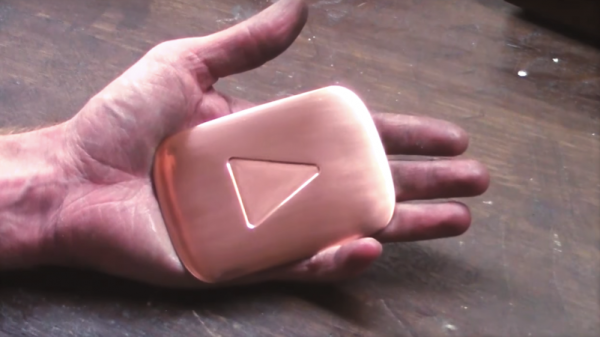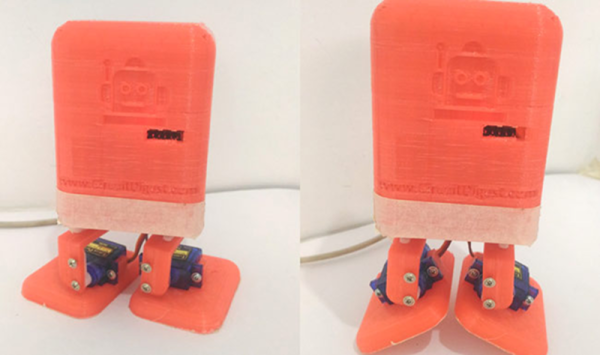YouTube channels unboxing their latest “Play Button Award,” a replica of the famous logo in silver, gold, or faux-diamond depending on the popularity of the channel, are getting passé. But a metalworking channel that makes its own copper Play Button award to celebrate 25,000 subs is something worth watching.
[Chris DePrisco] is a bit of a jack-of-all-trades, working in various materials but with a strong focus on metalwork. He recently completed a beefy home-brew vertical milling center; we covered his attempt to leverage that platform by adding an extruder and turning it into a large bed 3D printer. For the Play Button build, [Chris] turned to the VMC to mill a mold from what appears to be a block of graphite; good luck cleaning that mess up. He melted copper scrap in a homemade electric furnace and poured it into the preheated mold — a solid tip for [The King of Random]’s next copper casting attempt. The rough blank was CNC machined and polished into the Play Button, and finally mounted behind glass neatly inked with paint pens in the versatile VMC. The final result is far nicer than any of the other Button awards, at least in our opinion.
Continue reading “Celebrating A Subscriber Milestone With A Copper YouTube Play Button”




















